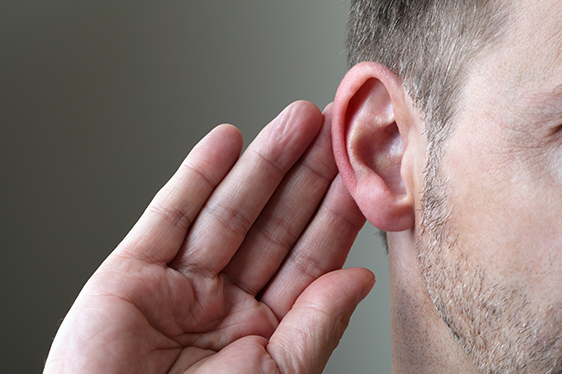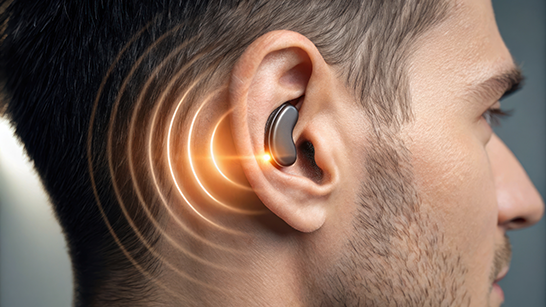Types of hearing aids: Choose the right one for your hearing
With many hearing aid types available, choosing the right one depends on your hearing needs, lifestyle, and comfort. This guide covers key options—like BTE, ITE, CIC, and invisible hearing aids—plus features such as rechargeable batteries, Bluetooth connectivity, and OTC availability. Whether you need hearing aids for seniors, tinnitus relief, or single-sided deafness, use this quick overview to find the best hearing aid for your situation.

With many hearing aid types available, choosing the right one depends on your hearing needs, lifestyle, and comfort. This guide covers key options—like BTE, ITE, CIC, and invisible hearing aids—plus features such as rechargeable batteries, Bluetooth connectivity, and OTC availability. Whether you need hearing aids for seniors, tinnitus relief, or single-sided deafness, use this quick overview to find the best hearing aid for your situation.
What is a behind-the-ear hearing aid?
Behind-the-ear (BTE) hearing aids sit behind the ear and connect to an earmold or dome via a tube.
Best for: Moderate to profound hearing loss
Key features:
- Strong amplification
- Long battery life
- Durable for daily use
| Feature | Description |
|---|---|
| Visibility | Medium |
| Power Level | High |
| Battery Type | Replaceable or rechargeable |
| Use Case | Severe hearing loss, general use |
What are the differences between ITE, ITC, and CIC hearing aids?
These in-ear hearing aids vary by size and placement:
- In-the-ear (ITE): Fills outer ear; easier to handle
- In-the-canal (ITC): Partially fits in the ear canal; discreet
- Completely-in-canal (CIC): Sits deep in the canal; nearly invisible
Ideal for: Mild to moderate hearing loss, aesthetic preferences
| Model | Visibility | Power | Handling |
|---|---|---|---|
| ITE | Low | Medium | Easy |
| ITC | Very Low | Medium | Moderate |
| CIC | Invisible | Low | Tricky |
What are invisible and custom hearing aids?
Invisible hearing aids and custom hearing aids are molded for a tight, personalized fit.
Best for: Users who value appearance and comfort over amplification.
What is a receiver-in-canal hearing aid?
Receiver-in-canal (RIC) models place the speaker in the canal for natural sound.
Best for: Mild to moderate hearing loss
What is an open-fit hearing aid?
Open-fit hearing aids allow airflow and unblocked natural sound.
Best for: High-frequency hearing loss and first-time users
| Feature | RIC | Open-Fit |
|---|---|---|
| Sound Quality | Natural | Natural + airflow |
| Comfort | High | High |
| Appearance | Discreet | Discreet |
What is the difference between digital and analog hearing aids?
Digital hearing aids convert sound into digital signals and process them using a computer chip. They offer features like noise reduction, directional microphones, multiple listening programs, and fine-tuned sound adjustments tailored to your hearing profile.
Analog hearing aids, by contrast, amplify all sounds continuously using traditional electronic circuits. They have fewer customization options and are less commonly used today due to limited sound processing capabilities.
In short:
- Digital = customizable, advanced features, better sound quality.
- Analog = basic amplification, less control, largely outdated.
What are smart and app-connected hearing aids?
Smart hearing aids and app-connected hearing aids connect to smartphones.
Features include:
- Remote volume control
- Custom program settings
- Real-time updates via app
What are rechargeable and wireless hearing aids?
Rechargeable hearing aids use overnight-charging batteries and wirelessly connect to devices like phones or TVs via Bluetooth, enabling direct audio streaming and remote control through apps.
What are over-the-counter hearing aids?
Over-the-counter (OTC) hearing aids are FDA-approved devices sold without a prescription. They are designed for adults with mild to moderate hearing loss and offer a more affordable, accessible option compared to prescription models.






